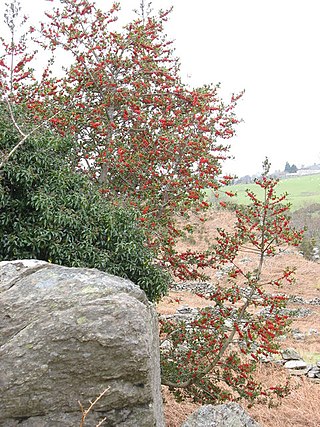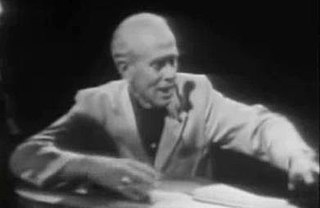
Christmas music comprises a variety of genres of music regularly performed or heard around the Christmas season. Music associated with Christmas may be purely instrumental, or in the case of carols, may employ lyrics about the nativity of Jesus Christ, traditions such as gift-giving and merrymaking, cultural figures such as Santa Claus, or other topics. Many songs simply have a winter or seasonal theme, or have been adopted into the canon for other reasons.

"Silent Night" is a popular Christmas carol, composed in 1818 by Franz Xaver Gruber to lyrics by Joseph Mohr in Oberndorf bei Salzburg, Austria. It was declared an intangible cultural heritage by UNESCO in 2011. The song was first recorded in 1905 and has remained a popular success, appearing in films and multiple successful recordings, as well as being quoted in other musical compositions. It is the world's most recorded Christmas song, with more than 137,000 known recordings.

"Good King Wenceslas" is a Christmas carol that tells a story of a tenth-century king of Bohemia who goes on a journey, braving harsh winter weather, to give alms to a poor peasant on the Feast of Stephen. During the journey, his page is about to give up the struggle against the cold weather, but is enabled to continue by following the king's footprints, step for step, through the deep snow.

Sir John Milford Rutter is an English composer, conductor, editor, arranger, and record producer, mainly of choral music.
"Carol of the Bells" is a popular Christmas carol, which is based on the Ukrainian New Year's song "Shchedryk". The music for the carol comes from the song written by the Ukrainian composer Mykola Leontovych in 1914; the English-language lyrics were written in 1936 by Peter Wilhousky.

The "Coventry Carol" is an English Christmas carol dating from the 16th century. The carol was traditionally performed in Coventry in England as part of a mystery play called The Pageant of the Shearmen and Tailors. The play depicts the Christmas story from chapter two in the Gospel of Matthew: the carol itself refers to the Massacre of the Innocents, in which Herod ordered all male infants under the age of two in Bethlehem to be killed, and takes the form of a lullaby sung by mothers of the doomed children.

Gaudete is a sacred Christmas carol, thought to have been composed in the 16th century. It was published in Piae Cantiones, a collection of Finnish/Swedish sacred songs published in 1582 in the North German city of Greifswald. No music is given for the verses, but the standard tune comes from older liturgical books. There is a known entry from around 1420 in the Hussite Jistebnice hymnal.
"I Saw Three Ships (Come Sailing In)" is an English Christmas carol, listed as number 700 in the Roud Folk Song Index. The earliest printed version of "I Saw Three Ships" is from the 17th century, possibly Derbyshire, and was also published by William Sandys in 1833. The song was probably traditionally known as "As I Sat On a Sunny Bank", and was particularly popular in Cornwall.

Folk Songs is a song cycle by the Italian composer Luciano Berio composed in 1964. It consists of arrangements of folk music from various countries and other songs, forming "a tribute to the extraordinary artistry" of the American singer Cathy Berberian, a specialist in Berio's music. It is scored for voice, flute, clarinet, harp, viola, cello, and percussion. The composer arranged it for a large orchestra in 1973.

"The Holly and the Ivy" is a traditional British folk Christmas carol, listed as number 514 in the Roud Folk Song Index. The song can be traced only as far as the early nineteenth century, but the lyrics reflect an association between holly and Christmas dating at least as far as medieval times. The lyrics and melody varied significantly in traditional communities, but the song has since become standardised. The version which is now popular was collected in 1909 by the English folk song collector Cecil Sharp in the market town of Chipping Campden in Gloucestershire, England, from a woman named Mary Clayton.

John Jacob Niles was an American composer, singer and collector of traditional ballads. Called the "Dean of American Balladeers," Niles was an important influence on the American folk music revival of the 1950s and 1960s, with Odetta, Joan Baez, Burl Ives, Peter, Paul and Mary and Bob Dylan, among others, recording his songs.

Noël is the sixth studio and first Christmas album by Joan Baez, released in November 1966.
"God Rest You Merry, Gentlemen", also known as "God Rest Ye Merry, Gentlemen", is an English traditional Christmas carol. It is in the Roxburghe Collection, and is listed as no. 394 in the Roud Folk Song Index. It is also known as "Tidings of Comfort and Joy," and by other variant incipits.
Tradition Records was an American record label from 1955 to 1966 that specialized in folk music. The label was founded and financed by Guggenheim heiress Diane Hamilton in 1956. Its president and director was Patrick "Paddy" Clancy, who was soon to join his brothers Liam and Tom Clancy and Tommy Makem, as part of the new Irish folk group, The Clancy Brothers and Tommy Makem. Liam Clancy designed the company's maple leaf logo. Columbia University Professor of Folklore Kenneth Goldstein was also involved in the early creation of the company, which operated out of Greenwich Village, New York, United States.

"Gabriel's Message" or "The angel Gabriel from heaven came" is a Basque Christmas folk carol about the Annunciation to the Virgin Mary by the archangel Gabriel that she would become the mother of Jesus Christ the Son of God.
The Wexford Carol or the Enniscorthy Carol is a traditional religious Irish Christmas carol originating from Enniscorthy in County Wexford. The subject of the song is the nativity of Jesus Christ.

Happy Holiday is a 1955 Christmas album of Christmas songs and carols by Jo Stafford, accompanied by her husband Paul Weston and his orchestra. The entire family participated in the creation of this album; young Tim Weston is the small boy on the cover. Stafford is also joined by The Starlighters for vocal background, just as she was after her version of The Chesterfield Supper Club moved to Hollywood.

"Love Came Down at Christmas" is a Christmas poem by Christina Rossetti. It was first published without a title in Time Flies: A Reading Diary in 1885. It was later included in the collection Verses in 1893 under the title "Christmastide".
"The Hearse Song" is a song about burial and human decomposition, of unknown origin. It was popular as a World War I song, and was popular in the 20th century as an American and British children's song, continuing to the present. It has many variant titles, lyrics, and melodies, but generally features the line "The worms crawl in, the worms crawl out," and thus is also known as "The Worms Crawl In." Generally, the song recounts the viewing of a hearse, prompting the thought of death. The listener's body is buried in a casket and assaulted by worms, then decomposes; some versions continue by stating the dead listener will be forced to eat their moldering remains.

"This Have I Done for My True Love", or "Tomorrow Shall Be My Dancing Day", Op. 34, no. 1 [H128], is a motet or part song composed in 1916 by Gustav Holst. The words are taken from an ancient carol, and the music is so strongly influenced by English folk music that it has sometimes been mistaken for a traditional folk song itself. It has often been described as a small masterpiece.













